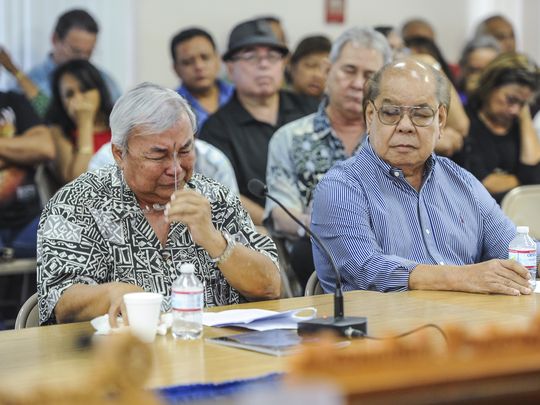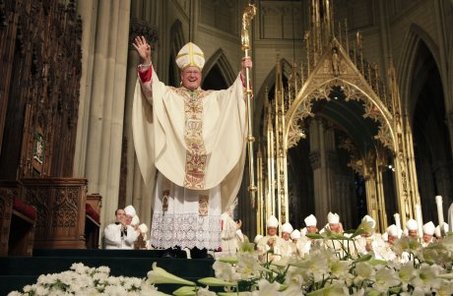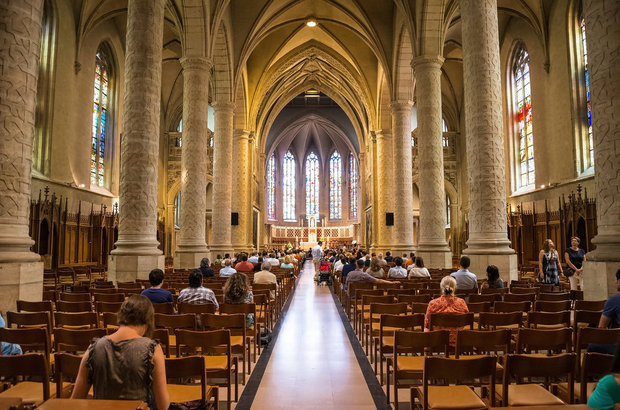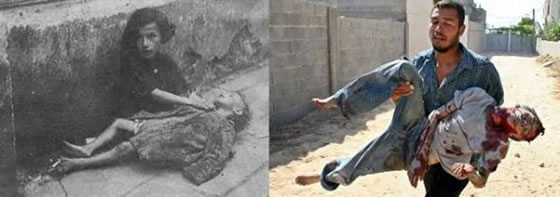By
World’s largest clergy abuse survivors network says abusive priests ‘dumped’ in faraway places
Guam’s Catholic church leadership has known for decades about clergy sex abuses that happened as early as the 1950s, a retired priest said in a signed statement released Nov. 1. The statement was released in connection with civil lawsuits filed by several former altar boys, who allege sexual abuse at the hands of Guam priests decades ago.
He said his only form of punishment for molesting at least 20 boys at the time was to say prayers — as instructed by then-Archbishop Apollinaris W. Baumgartner.
Retired priest Louis Brouillard, now 95 and living in Minnesota, said his sexual contact with children when he was on Guam was known to other priests, including Baumgartner, the highest Catholic leader on Guam from 1945 to 1970. Brouillard served as a priest on island from the late 1940s to 1981.
Brouillard said Baumgartner approached him to talk about the “situation.”
“I was told to try to do better and say prayers as a penance,” Brouillard wrote. “I believe the Catholic Church should be honest and truthful regarding what happened on Guam during my time there.”
Brouillard made a video at his Pine City, Minnesota, residence and signed a written statement dated Oct. 3 in support of a former altar boy’s Nov. 1 lawsuit against him for allegedly sexually abusing him six decades ago.
“I am making this video to reach out to the parishioners of the Archdiocese of Guam, and anyone I may have harmed, to ask forgiveness for action done by me many years ago,” Brouillard said in the statement attached to the lawsuit against him and others.

Leo Tudela, now 73, said Brouillard sexually abused him at a church rectory and during Boy Scouts of America activities in the 1950s. Tudela said the abuse started when he was 13 years old.
Through attorney David Lujan, Tudela sued not only Brouillard but also the Archdiocese of Agana and up to 50 other people who may have a role in covering up, concealing or disguising Brouillard’s sex abuses, among other things, the lawsuit states.
On Aug. 1, Tudela publicly accused Brouillard of sex abuse when Tudela testified in support of a bill lifting the statute of limitations for child sex abuse cases. A few days later, Brouillard, who was called at his Minnesota home, admitted that he abused multiple boys while he was a priest on Guam.
The church and some of its priests on Guam can be sued over sex abuses for the very first time only this year, courtesy of a new law that lifts all civil statutes for child sex abuse cases.
‘Geographic solution’
Brouillard, who was ordained as a priest on Guam in 1948, left the island in 1981.
Although church leadership on Guam was aware of Brouillard’s sexual abuse of boys on Guam, Brouillard left island and was allowed to serve as a priest in at least three parishes in Minnesota.
It was only in 1995 that Brouillard was removed from ministry, following credible allegations of child sexual abusethere.
The world’s largest and oldest network of clergy abuse survivors, called the Survivors Network of those Abused by Priests, or SNAP, said Brouillard’s case is not unique.
“He was given what advocates like to call ‘the geographic solution.’ Brouillard was sent as far away as possible so that victims could not find him. He was still paid so that he would keep quiet,” said Joelle Casteix, SNAP’s volunteer Western regional director.
“Abusive priests are dumped in unsuspecting communities so that the priest and his home diocese can escape legal accountability. The fact that Brouillard somewhat admitted his crimes is remarkable. Hopefully, that gave his brave victims some sense of vindication,” Casteix said.
It is also only this year, starting in May, that former altar boys have come forward to publicly accuse priests on Guam of sexually abusing them decades ago. Former accusations against priests were done by relatives of alleged victims.
Current and former members of the Catholic church who have so far been publicly accused of sexual abuse include Archbishop Anthony S. Apuron, who is now facing a canonical trial at the Vatican, Brouillard, and the late Brother Mariano R. Laniyo.
The late priest John H. Sutton, who worked on Guam from 1971 to 1974, was accused in 2015 by a man of raping him repeatedly when he was a student in Texas.
In 2014, the San Francisco Archdiocese in California removed the Rev. John Howard from ministering in the city after he was removed from his post on Guam over allegations he molested two boys four decades ago while serving in the Archdiocese of Los Angeles.
Tudela is not the only former altar boy who has sued the Archdiocese of Agana and clergy members over sex abuse. Three others — Roland Sondia, Walter Denton and Roy Quintanilla — filed separate lawsuits on Nov. 1 against Archbiship Anthony Apuron, the archdiocese and up to 50 others. They allege Apuron sexually abused them in the 1970s, when he was parish priest in Agat.
Lujan said he is representing at least a dozen more victims of alleged child sex abuse on Guam, and the alleged perpetrators include other priests who were not previously publicly accused.
The second batch of lawsuits involving former altar boys and others is expected to be filed this week, Lujan said.
‘Crossed the line’
Brouillard’s two-page signed statement outlines his sex abuse of minors during the more than four decades he was on Guam, holding many positions in the Catholic church.
He managed the Boy Scouts and served as its president on Guam. He was assigned at the Santa Teresita Church in Mangilao. His other job was teaching sexual education to the boys in the parish.
“Looking back now, I realize that I crossed the line with some of my actions and relationships with the boys,” Brouillard said. “During some of the sex education talks, while at Santa Teresita, I did touch the (private parts) of some of the boys and some of the boys did perform oral sex on me. Some of these incidents took place in Mangilao at the rectory of the Santa Teresita Church.”
Brouillard said because of the many years that have passed, he does not remember the exact dates and times or the names of the boys involved.
“There may have been 20 or more boys involved. Other locations where the sexual contact may have happened would be at San Vicente and Father Duenas Memorial Schools,” he said. “At that time, I did believe that the boys enjoyed the sexual contact and I also had self-gratification as well.”
Brouillard said he has come to learn the name of one of the boys he had sexual contact with at the Santa Teresita rectory.
“His name is Leo Tudela. He is from the island of Saipan. I apologize to you Leo and the rest of the boys that I may have harmed. I regret with all my heart any wrong I did to them. I pray for all the boys I may have harmed and ask for their forgiveness and for forgiveness from God,” the retired priest said.
Meanwhile, Pope Francis named on Oct. 31 a successor to Archbishop Apuron, now 71.
The pope appointed Detroit Bishop Michael Jude Byrnes as coadjutor archbishop of the Archdiocese of Agana. As coadjutor archbishop, Byrnes has the right to succeed Apuron if Apuron resigns, retires or is removed. Under church law, bishops are required to resign at 75. Byrnes arrives on Guam on Nov. 28.
Editor’s note: A previously published version of the story named another priest as someone who had been removed by the San Francisco Archdiocese in 2014. The priest who was removed was the Rev. John Howard.
Complete Article HERE!





